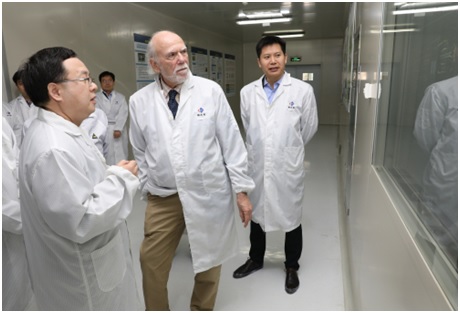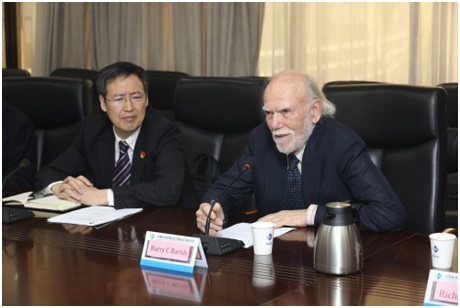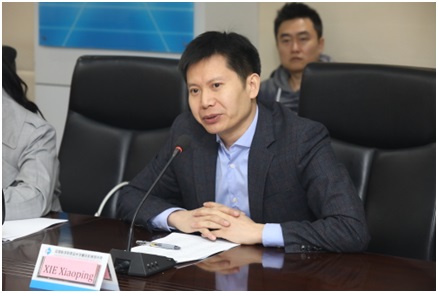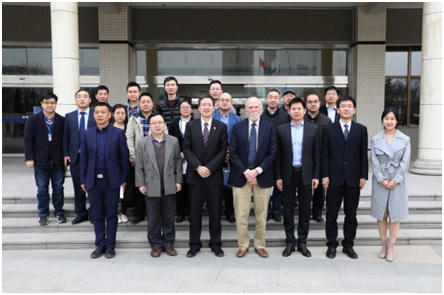On March 13, the Nobel prize winner in physics Professor Barry C. Barish and his research group, accompanied by the director Li Zhijun and deputy director Duan Xuechao of Xi’an Bureau of Science and Technology, visited XIOPM. They were warmly welcomed by the deputy director of XIOPM Xie Xiaoping and director of State Key Laboratory of Transient Optics and Photonics (hereinafter referred to as “the Laboratory”) Yao Baoli.
At 2:00 p.m., Professor Barry C. Barish and his fellows, accompanied by Xie Xiaoping, visited the Laboratory. Yao Baoli thoroughly introduced that the Laboratory, in the aspects of photonic information and network of new generation, international frontier of optics and supporting the national major demands, has achieved series of research findings in the fields of generation of information photons, acquisition, transmission, processing and application of photonic information and photonic manufacturing. Professor Barry C. Barish and his fellows now and again stopped and talked with the research fellows on the subjects of interest.
After the visit, Professor Barry C. Barish and his fellows had a discussion and communication with relative research fellows of XIOPM in the meeting room. Xie Xiaoping addressed the meeting and gave a brief introduction to the history and the major disciplines of XIOPM. Afterwards, the two parties discussed the relevant technologies upon advanced optoelectronics and biochemical photonics.
Professor Barry C. Barish is a famous experimental physicist in America. Attributed to his great contribution to the detector and gravitational wave of LIGO, he, together with Professor Rainer Weiss and Professor Kip Thorne, won the Nobel prize in physics in 2017. Professor Barry C. Barish is a leading expert in the field of gravitational wave, playing an creative and leading role in LIGO project and opening a new window for human to know the universe. In addition, Professor Barry C. Barish, based on his research and knowledge on physics and kinds of high-tech instruments, has been devoting himself into applying high technology of physics into health and medical apparatuses and promoting the improvement of biomedical technology and development of diagnosis equipment. (Comprehensive Research Office)






